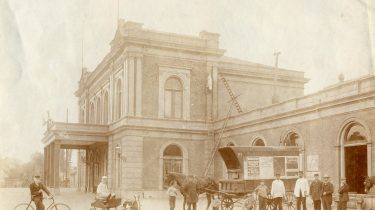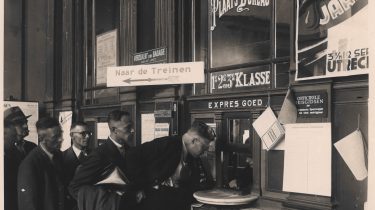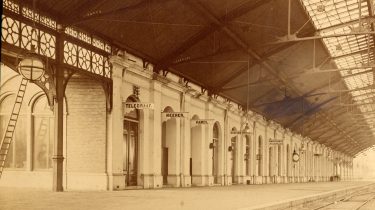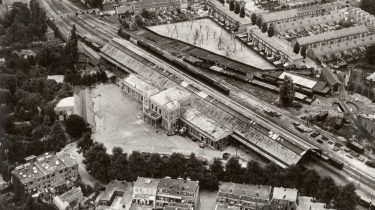
Maliebaanstation 150 years
- Activity
- Exhibition
- Date
- 25 Apr 2024 t-m 1 Nov 2024
- Age
- Children ages 4+, Adults
Exhibition
In 1874, a new railway station, Maliebaan station, was opened in Utrecht. In the exhibition ‘Maliebaanstation 150 years’, the museum looks back on its long history. Meet the people who worked there and discover the many functions the station has had over the years. From station where the train to Paris left, to marshalling and goods station. And from the dark history during the Second World War to its current function as a museum.

Protests!
On 10 June 1874, the Hollandsche IJzeren Spoorweg- Maatschappij opened a branch of the Oosterspoorlijn that ran from Hilversum to Utrecht. Near Maliebaan, a monumental station rose as a boarding point for Utrecht passengers.
The choice of the station’s location had some issues. The originally planned route crossed the Singel and Zocherplantsoen. This led to strong protests from local residents and the city council was also opposed. Objections focused on the loss of green space for pedestrians, closure of the waterway and road traffic congestion. People also feared nuisance from ‘rolling and smoking locomotives’. Buys Ballot of the KNMI (Royal Netherlands Meteorological Institute) on the Zonnenburg stronghold feared interference with the measuring equipment, while the prison warden of Wolvenplein feared that passing trains would make prisoners think of the outside world and ‘make plans to escape’.
A route east of Maliebaan was eventually chosen, with a station at the Maliebrug opposite Lepelenburg parc. The station was built for the paltry sum of 200,000 guilders by today’s standards. Construction took only 9 months!

From station to museum
Initially, the station flourished -you could board a direct train to Paris- but gradually the station lost its important function. In 1935, poet F. Bordewijk aptly described the atmosphere in the station as “a corpse above the earth, which will often still oppressively control our dreams”. In 1939, the station closed for passenger traffic, although the abandoned station was still used as a classification yard and freight station. In World War II, the Germans took possession of Maliebaan station, with the darkest chapter being the deportation transports of Jews from Utrecht.
After the war, it was decided that Maliebaan Station would become the ‘permanent home’ of the Railway Museum. The museum opened on November 28th 1953; for an admission fee of 25 cents, visitors could visit part of the new museum. In November 1954, the entire museum was finished and the official opening took place. In 2005, the station was restored to its original state and has served as the monumental entrance building of the renovated Railway Museum ever since.

